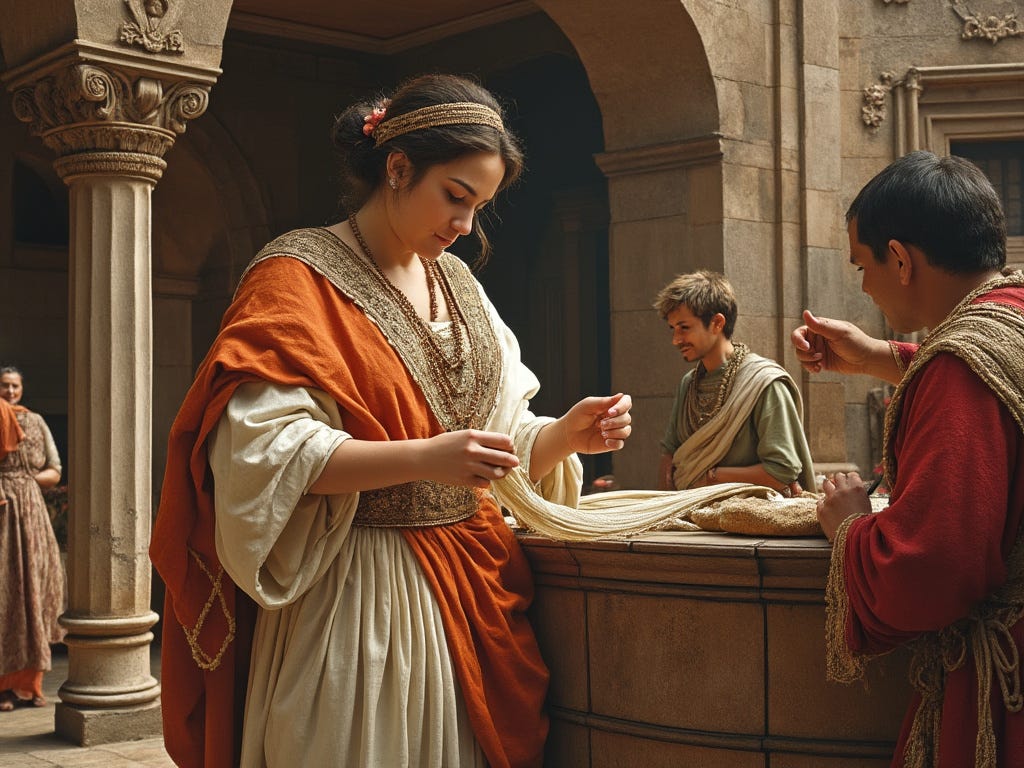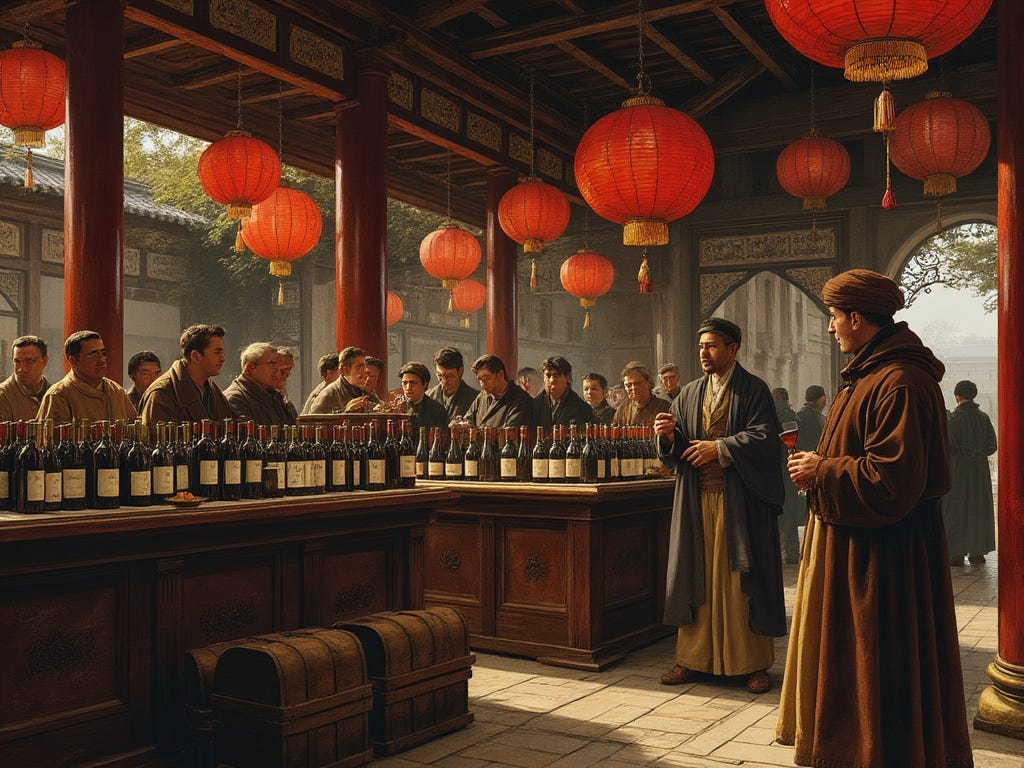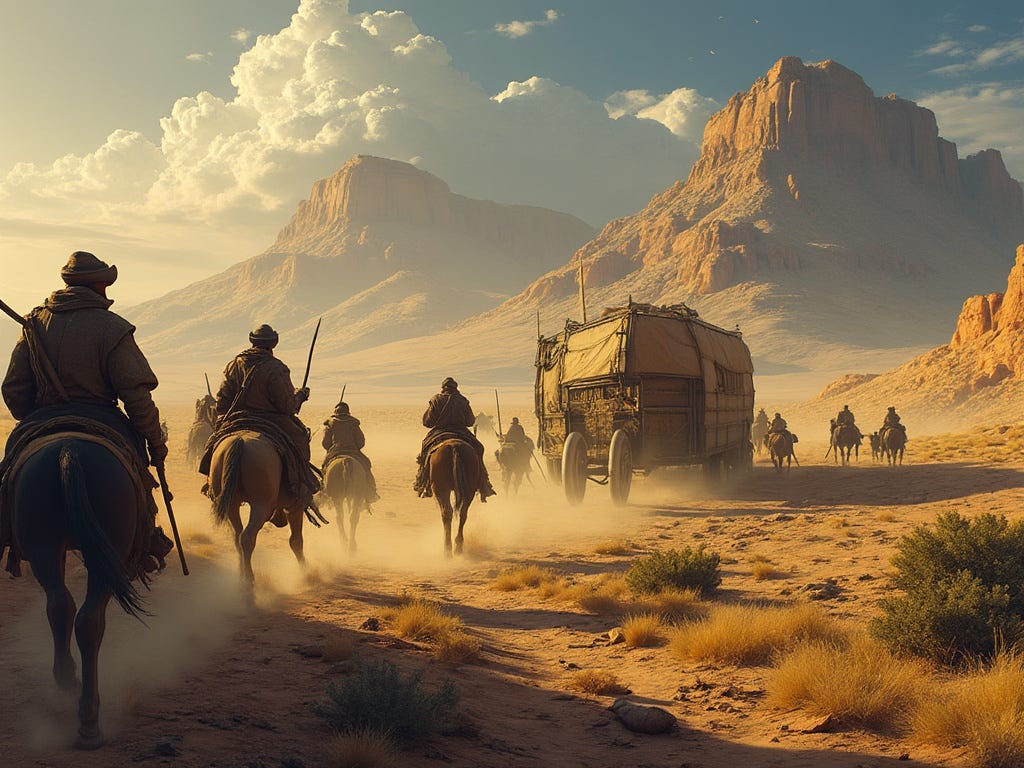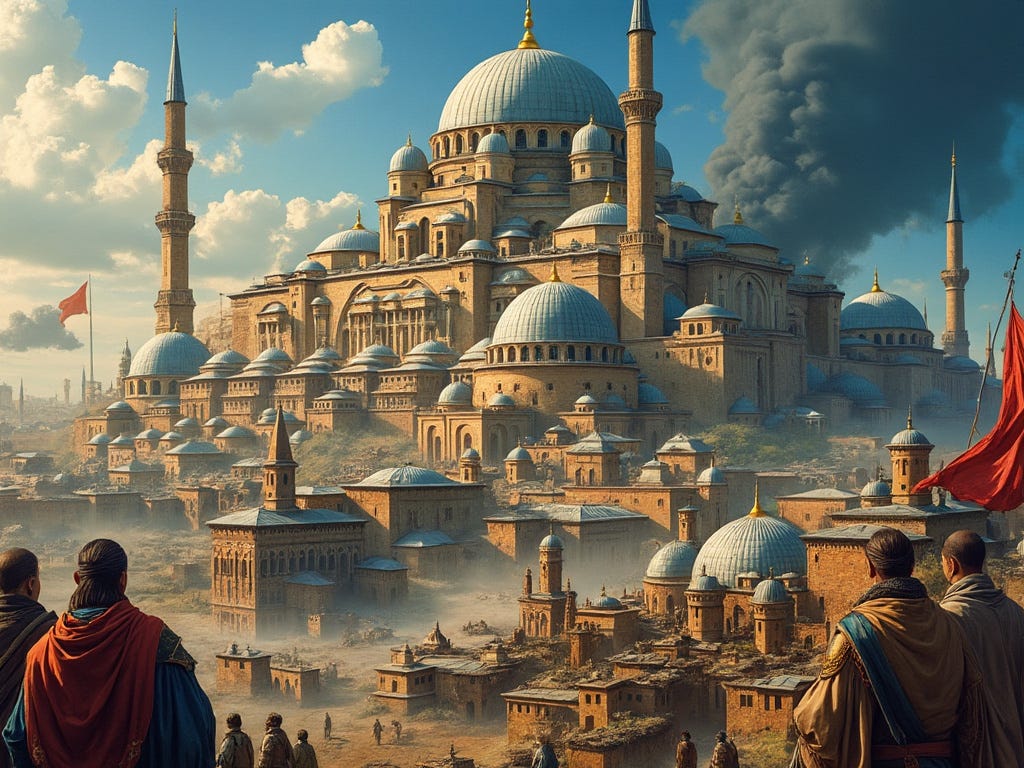The Silk Road and its impact on global trade and knowledge transfer
The oldest trade network that transcended civilizations and helped fuel the transfer of ideas and technology
I have not told the half of what I saw. - Marco Polo
From silk to gunpowder, from Buddhism to the very concept of zero, the Silk Road was a conduit for the sophisticated exchange of cultural, material, and technological marvels between the East and West. Centuries before globalization became a buzzword, the Silk Road was its embodiment. The sprawling network of trade routes that comprised the Silk Road spanned multiple continents over a distance of approximately 6,400 km (4,000 miles).
Global trade early signs?
Almost two millennia ago, much of the world remained unexplored. Both Greek and Venetian traders actively engaged in commerce across the Mediterranean Sea, albeit on a much smaller scale than later explorations. There was no overarching ambition at that time to cross vast oceans in search of new lands. At least, not yet.
Centuries before the idea of the Silk Road took shape, efforts were made to establish various pathways connecting cities to each other or to ports, aiming to streamline the movement of communication, trade goods, and military forces.
The Persian king Darius created the Persian Royal Road in the 5th century BCE. This 2,000-mile path extended from the Tigris River to the Aegean Sea. Regular relay stations along this route enabled goods and messages to travel in one-tenth of the time it would normally take.
Alexander the great conquest of Persia and expansion of the empire through central Asia helped to create the route. These efforts laid the foundation of the original transportation road from China to Europe.
Origin of Silk trade route
Since the Han Dynasty, an intricate network of caravan routes formed across Central Asia, leading all the way to the Roman Empire. It was Emperor Wu (141-87 BC) who initiated these explorations, sending his emissaries to Southeast Asia, Central Asia, and eventually to the Roman Empire.
Ambassador Zhang Qian was sent by Emperor Wu of Han dynasty as an envoy to secure alliances and negotiate and explore territories further beyond the Han empire. He negotiated trade relationships with nomads in Central Asia. Soon silk and Jade from China were traded for Horses and Cotton from Central Asia.
Some history scholars say that the Roman Emperor Caesar played a role in starting the Silk craze within the Roman Empire. And his lover Cleopatra was reputed to be an avid collector of silk garments. The Han people would have taken pride in knowing that their silk products were in such high demand among the elite of both the Roman and Egyptian empires.
Was it the demand for silk that invigorated trade along the Silk Road?
The ancient capital city of Chang'an, flourishing under numerous dynasties for centuries, served as the starting point for all trade emanating from Asia. Buddhist monks, such as Faxian, journeyed from the Kushan Empire in India to Chang'an via Central Asia (what is now Afghanistan), laying the foundations for Buddhism to take root and gradually spread throughout China
Trade was primarily conducted overland with caravans, making it a painstakingly slow process, fraught with dangers such as bandits and harsh weather conditions. Traveling in groups provided an obvious defense, increasing the likelihood of safeguarding their merchandise from seizure.
Ambassadors and emissaries from both the eastern and western part of the world traveled through the Silk road. They returned with tales of riches and cultures that the local population had never heard of before.
Marco Polo, a Venetian traveler, wrote about his time spent during the Yuan dynasty in China in his popular book, 'The Travels of Marco Polo.' His account provided a window into another world. He formed a close relationship with the Mongolian Emperor Kublai Khan and even worked as a tax collector during his stay.
What goods were transported over the Silk Road network?
Commerce was bidirectional, although the majority of trade flowed from East to West.
East to West
Silk (China)
Spices (mostly from Southern India centered around Kerala)
Tea (China)
Porcelain Ceramic (China)
Lacquerware (China and Japan)
Cotton and Silk fabrics (China and India)
Paper (China)
Crossbow
West to East
Glassware (Venetian roots)
Gold and Jewelry (Baltic primarily)
Persian Carpets (Middle east)
Wine (Roman empire)
Horses (Mongols / Central Asia
Furs (Russia
Ivory (Africa)
Food like grapes, pomegranates, walnuts and carrots
But as I mentioned at the beginning of the article, the Silk Road was not just a conduit for physical goods; it also facilitated the exchange of ideas and technologies. Buddhism spread from India and Sri Lanka to China and the rest of East Asia. Buddhism competed with the established philosophies of Confucianism and Taoism. Islam spread from Arabian peninsula to South Asia.
What about migration of technology and cultural ideas?
East to West
Paper making (using Tree bark and Hemp)
Gun Powder
The Compass
Modern day Guitar
The number zero
West to East
Islam (from Caliphates to Mongols)
Buddhism (from India to Central Asia to East Asia)
Metal working and Mining
Architectural styles (Descendant of Sinem who build the Blue Mosque also built Taj Mahal) - use of domes and arches
Medical knowledge such as surgical techniques
What did they pay for transportation cost?
There is no definitive evidence on the precise cost of transporting high-value commodities like silk along the Silk Road, though one estimate suggests that shipping costs could have been approximately 10-20% of the cargo's total value which includes the cost to secure the transportation from bandits.
When caravans passed through major city crossroads, their cargo needed to be disembarked and transferred to another caravan. This added significantly to the cost of transportation.
To reduce overall costs, caravans would often aggregate goods from different traders to achieve economies of scale on their journey, similar to how modern carriers like FedEx or UPS operate their shipping businesses.
How long did it take for transportation?
Today, trade happens almost instantly. A buyer in NYC can place an order on a platform like Alibaba and have it express shipped within three days. The speed and volume at which goods and information move today are unprecedented.
So, what was the delivery time for goods from Chang'an to Rome? Based on sources from Marco Polo and others, our best estimate suggests it took about a year for a product like silk to travel from the Han Empire to the Roman Empire.
Timeline of the trade activities conducted through the Silk road
1st Century BC to 1st Century AD:
Trade over the Silk Road starts slowly, thanks to the Han Dynasty's enthusiastic westward expansion efforts. Think of it like the ancient equivalent of a 'let's connect on LinkedIn' but with less digital awkwardness and more camels. Initially, the cost was lower because there were fewer middlemen inflating the price with their 'transportation tax'.
1st Century AD to 6th Century AD (Han Empire on the east / Roman on the west):
A gradual increase in costs due to:
The expansion of trade networks, which added more middlemen to the mix, each wanting a slice of the profit pie.
Political instability in certain areas, where merchants had to shell out for protection or gamble with higher risks.
6th Century AD to 13th Century (Tang dynasty / Mongols / Islamic caliphates):
Costs were quite the rollercoaster, with spikes during chaos like post-Han Dynasty fallout and when the Islamic caliphates held the trade route's VIP passes
With the new Tang Dynasty, trade was not just encouraged but practically rolled out the red carpet, making routes safer.
During the Song dynasty in 10th century, trade briefly stopped since they lost control of the western part of the empire (was taken over by Western Xia kingdom)
Then, a massive change during the Mongol era (13th Century)
After the conquer and expansion mode of Mongol empire, the Pax Mongolica provided a relatively stable phase of trade.
Paper money was introduced as a medium of exchange of trade (as supposed to gold/silver coins or cowshells)
How did they pay for transactions?
Since modern paper money was non-existent 2000 years ago at the time of Silk Road commerce, payment methods were often quite complex. Payments could take the form of physical commodities like silk (as it was the most liquid asset), gold or silver coins, promissory notes, or cowrie shells. The diversity in payment systems reflects the very nature of global commerce, where different cultural and economic systems intersected.
To this day, there is evidence of Roman coins unearthed in India (in regions around the Ganges Delta), Vietnam, and Central Asia.
Impact of Ottoman empire on Silk road
In the late 14th century, a new empire emerged at the crossroads of Europe and Asia. With the conquest of the Byzantine Empire, the Ottoman Turks firmly established their rule over the region, which would last for over 500 years mainly controlling the trade routes of the Silk road.
So what brought an end to Silk road?
A few global geopolitical events occurred around 14th century that would go on to reshape the world as we know. Ottomans controlled the trade route making it more difficult for the goods to transfer to the Christian world. Suddenly, overland transport of cost of goods increased dramatically.
At the same time, the Ming dynasty—after years of maritime exploration by Zheng He—shifted to a more isolationist policy. This policy change put an end to centuries of prosperous trade along the Silk Road.
As a result, with increased transportation costs and a diminished supply from Ming China, the focus shifted to finding alternative routes to reach Asian markets.
Ironically, the Silk Road's success contributed to its demise. Technological inventions like the magnetic compass found their way to Europe, making the long Silk Road routes obsolete.














